A new island erupted from the sea – can it show us how nature works without human interfer
October 12, 2025
The crew of the Ísleifur II had just finished casting their nets off the coast of southern Iceland when they realised something was wrong. In the early morning gloom in November 1963, a dark mass filled the sky over the Atlantic Ocean. They rushed to the radio, thinking that another fishing vessel was burning at sea, but no boats in the area were in distress.
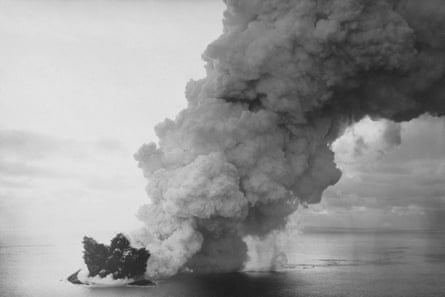
Then, their trawler began to drift unexpectedly, unnerving the crew further. The cook scrambled to wake the captain, thinking they were being pulled into a whirlpool. Finally, through binoculars, they spotted columns of ash bursting from the water and realised what was going on: a volcano was erupting in the ocean below.
By the time the sun had risen, dark ash filled the sky and a ridge was forming just below the surface of the water. By the next morning, it was 10 metres high. A day later, it was 40 metres. An island was being born.
Two months later, the rock was more than a kilometre long and 174 metres high at its peak. It was named Surtsey after the fire giant Surtr from Norse mythology.
Islanders and fishers from the nearby Vestmannaeyjar archipelago watched as lightning struck the volcanic eruption, which waxed and waned in its intensity, lighting up the winter half light. It would be two years before it stopped erupting completely.
“It is very rare to have an eruption where an island forms and is long lasting. It happens once every 3,000 to 5,000 years in this area,” says Olga Kolbrún Vilmundardóttir, a geographer with the Natural Science Institute of Iceland. Those that do form are often quickly washed away by the ocean, she says.
The emergence of Surtsey presented researchers with a precious scientific opportunity. They could observe how life colonises and spreads on an island away from the human interference that has overtaken much of the Earth.
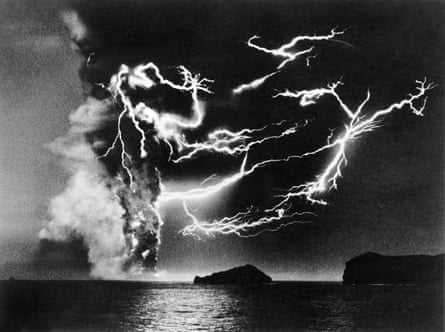
Other islands have emerged since the 1960s, but scientists say they have not been as ecologically stable. The last time something similar took place before Surtsey’s emergence was the birth of Anak Krakatau, Indonesia, in 1927, but it was quickly contaminated by humans. Icelandic researchers were adamant that this time would be different.
In 1965, Surtsey was placed under formal protection by the government. Only researchers and the odd journalist – under strict supervision – would be allowed to visit. No sheep would ever be allowed to graze there. The same year, the first plant was spotted: a clump of sea rocket brought over the waves from the Icelandic mainland.
“The first scientists that stepped on Surtsey in 1964 could see that seeds and plant residues had been washed ashore. Birds were even coming to the island to see what was going on. The eruption was still going on when they spotted the first plant – it was very quick,” says Vilmundardóttir.
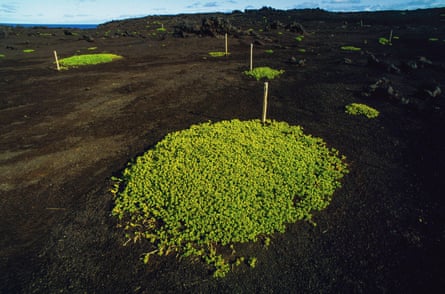
Scientists had expected algae and mosses to be the first colonisers, building up a base of soil that would eventually support vascular plants. But that step was skipped completely. More plants were washed ashore in the following years, and some clung to the island’s bare volcanic rock. But after a decade, the changes seemed to stall.
Pawel Wasowicz, director of botany at the Natural Science Institute, says: “People thought, what now? Around 10 species had colonised Surtsey at that point. The plant cover was really scarce. But then the birds arrived.”
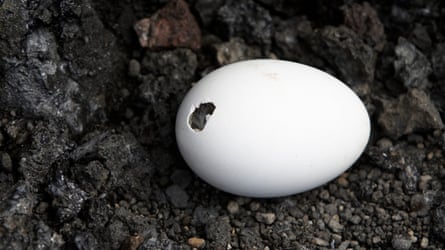
In the early 1980s, black-backed gulls started to nest on sections of the island, sheltering in one of the stormiest parts of the Atlantic Ocean. Their arrival kicked off an explosion of life. Guano carried seeds that quickly spread grasses along the island, fed in turn by the nutrients from the birds. For the first time, whole areas of bare rock became green.
Wasowicz says: “It’s surprising. From the times of Darwin, biologists thought that it was just plant species with fleshy fruits that could travel with birds. But the species on Surtsey do not have fleshy fruits. Almost all of the seeds on Surtsey were brought in the faeces of the gulls.”
One lesson from this living laboratory is that recovery after disturbance does not follow a single, predictable path, he says. Instead, it is shaped by multiple, sometimes surprising forces.
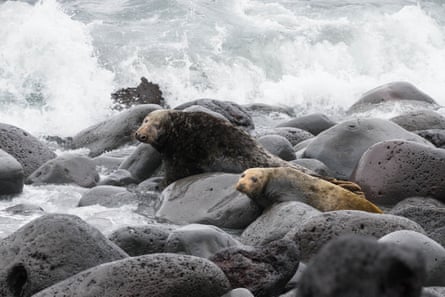
Today, grey seals are the latest arrivals to drive changes in the island’s biodiversity. The volcanic rock has become a crucial “haul-out” site where seals come ashore to rest and moult, as well as a breeding ground where they can raise their young safe from the orcas lurking nearby. Their faeces, urine and placentas from birth are bringing nitrogen to the island, helping life spread further.
But the researchers warn that the colonisation of Surtsey will one day go into reverse. The grey seal haul-out site is one of the areas slowly being eroded by the ocean. By the end of the century, scientists project that little will be left from that section of the island.
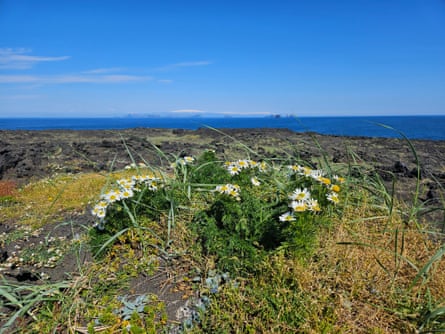
Its biodiversity will probably peak, then fall over time, eventually leaving a rock with sharp cliffs alone in the Atlantic. But the researchers say that lessons will remain.
Surtsey demonstrates that even in the harshest environments, resilience and renewal are possible, says Wasowicz. It offers hope and practical lessons for rehabilitating ecosystems damaged by war, pollution or exploitation: if space is given, nature will always find ways to return, often faster and more creatively than we expect.
Vilmundardóttir says: “I feel that Iceland is really contributing something important to humankind by preserving this area. On the mainland, the impact of humans is everywhere. When I am on Surtsey, I am really in nature. All you can hear are the birds. You see orcas along the coastline and the seals popping out and watching.”
Find more age of extinction coverage here, and follow the biodiversity reporters Phoebe Weston and Patrick Greenfield in the Guardian app for more nature coverage
Search
RECENT PRESS RELEASES
Related Post
